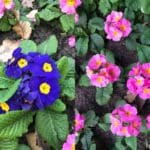Most gardeners will agree that fall is their favorite season. Not only does the weather begin to feel less intense, but there are also new plants that are eager to show off in the landscape.
The Aster plant, a fall-blooming perennial flower, is precisely one of the plants that will bring any garden back to life. Aster flowers bloom in dark red, blue, lavender, white, pink, or purple. Continue reading everything there is to know about growing asters outdoors:
Aster plant facts
- The name “aster” comes from a Greek word that referred to the “star”. This is an appropriate name, as aster’s blooms resemble a star.
- It is also a good name because the aster plant blooms when the rest of the flowers die, just like a shining star.
- Asters belong to the Asteraceae family of plants. Nowadays, another distinction has been made, and scientists have added this plant to the Symphyotrichum genus. Therefore, the New England Asters are also known as Symphyotrichum novae-angliae, whereas the New York Asters are known as Symphyotrichum novi-belgii.
- The Asters flower is native to North America and Eurasia, although nowadays, it can be found worldwide (1).
- Growing asters outdoors is now possible in zones ranging from 3 to 8, according to the USDA.
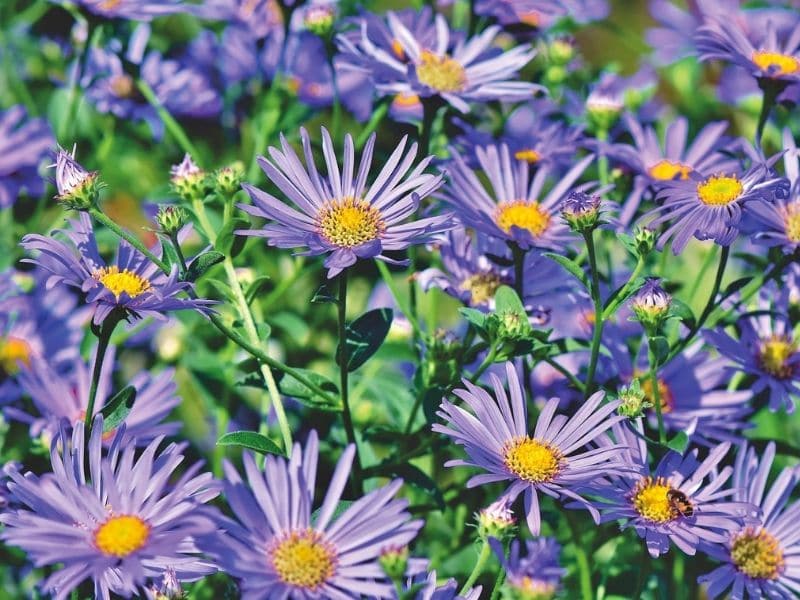
Characteristics of the Aster flower
- Aster plant is considered to be a herbaceous perennial flower (2).
- Asters are also known as Michaelmas daisies, starworts, New England asters, and frost flowers.
- The aster plant is striking, as it has groups of tiny flowers that form a cluster. As a result, when the aster flower blooms, it is able to attract many pollinators!
- The Michaelmas daisies plants can grow around 6 feet high, and their width can be up to 4 feet. Yet, this length and width will depend on the growing conditions, as some varieties could experience problems when developing.
- Pollinators love Aster plants because the flower appears when there are not many other flowers around. It is common to see bees, hummingbirds, and birds alike collecting the aster flower’s nectar.
- The Michaelmas daisies plants are related to marigolds, echinaceas, chrysanthemums, daisies, and sunflowers.
Aster Plants Grow and Care Tips
Growing asters outdoors is relatively easy, especially for beginner gardeners. Even though growing aster from seed is possible, you can also purchase an already established aster plant and transplant it to its final location.
However, there is another way of growing asters outdoors. If you already have a plant, you can dig it up and divide its roots. Disregard the woody part, which is the plant’s center, and replant the outer portions. This way, the new aster flower will appear within the following year or so.
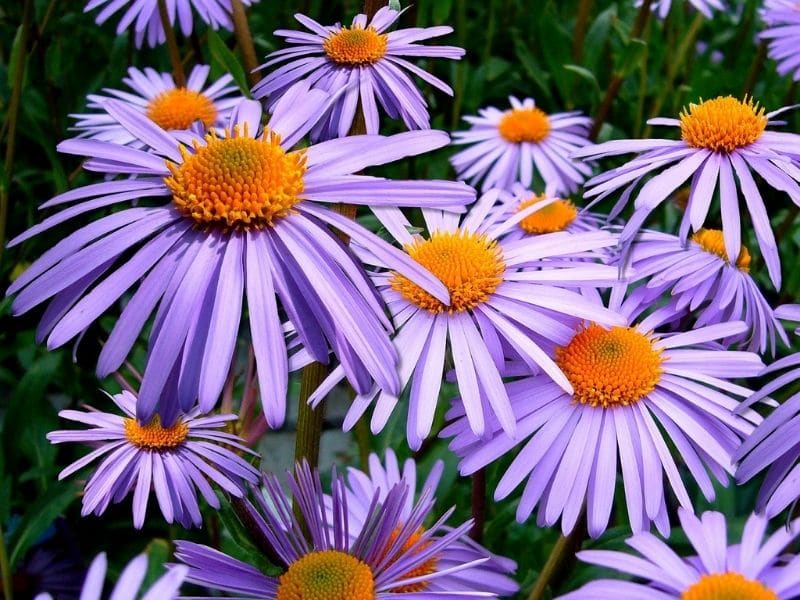
Light Requirements
Asters love being exposed to the sun. The more sunlight, the better. It prefers to be directly under the sun because if not, it can quickly get sick and die. However, some aster flowers, especially those that are not hybrids, will do perfectly well in a lightly shaded area.
Soil Needs
Annual aster flowers prefer slightly acidic soil. In fact, if the soil is loamy, then this plant will thrive. Adding organic matter, such as well-rotted manure or compost, to an alkaline or clay soil will definitely improve the ground’s nutrients, and, as a result, asters growing conditions will make the plant flourish!
Water Requirements
The aster flower care is straightforward as it only needs moist soil. Moreover, the aster flower seeds need to be watered constantly and thoroughly.
It is important to note, though, that the water shouldn’t touch the aster foliage. Instead, focus on watering the potting soil. If not, these daisy like flowers could suffer from mildew almost immediately, as the aster plant is a highly susceptible flower.
Temperature
These flowering plants are frost hardy, and they will grow healthier in cooler temperatures. This is why it prefers the fall to bloom. In some areas, the starworts will even withstand frosts or near-freezing temperatures, albeit only for a short period.
Fertilizer
Michaelmas daisies do not require as much fertilizer as other blooming plants. When growing aster outdoors, it will only need to be fed once a month or once every two months, and it will highly appreciate it. Ideally, the fertilizer feeding should stop as soon as the bloom starts to emerge.
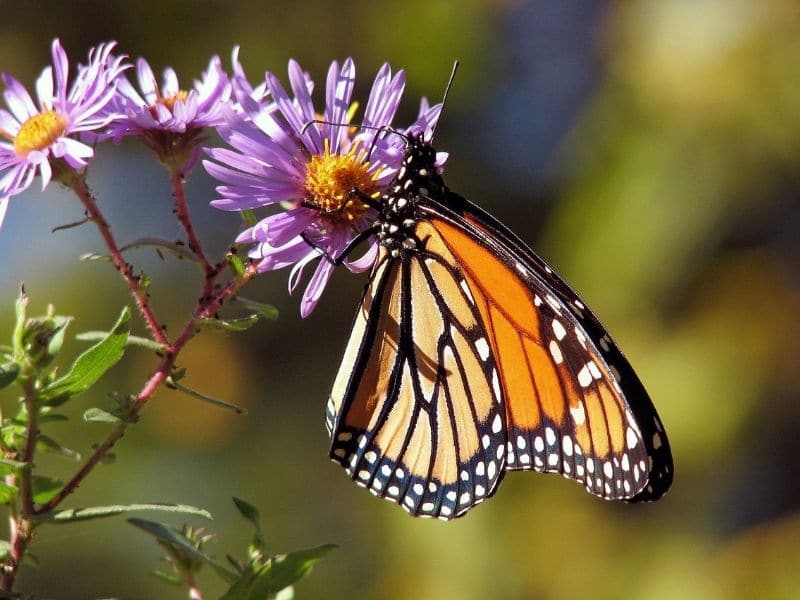
Common Pests and Diseases
Frost flowers are often attacked by rust and powdery mildew. It would be best to have excellent air circulation, especially if the plant is indoors.
Additionally, lace bugs tend to love aster flowers. They are tiny and often go undetected. You will only realize they are there because you will see the damage to the plant.
A great idea to combat lace bugs is to use an organic insect soap that will remove them almost immediately without affecting the aster flower’s growing and blooming period.
How To Propagate Asters
- As mentioned earlier, asters can be propagated by cuttings. This flower can be planted from seeds or it could be purchased from a nursery to transplant into the soil later.
- Ideally, these flowers will need to be planted in late fall or early during the following spring. This way, the roots will establish themselves during the first couple of months.
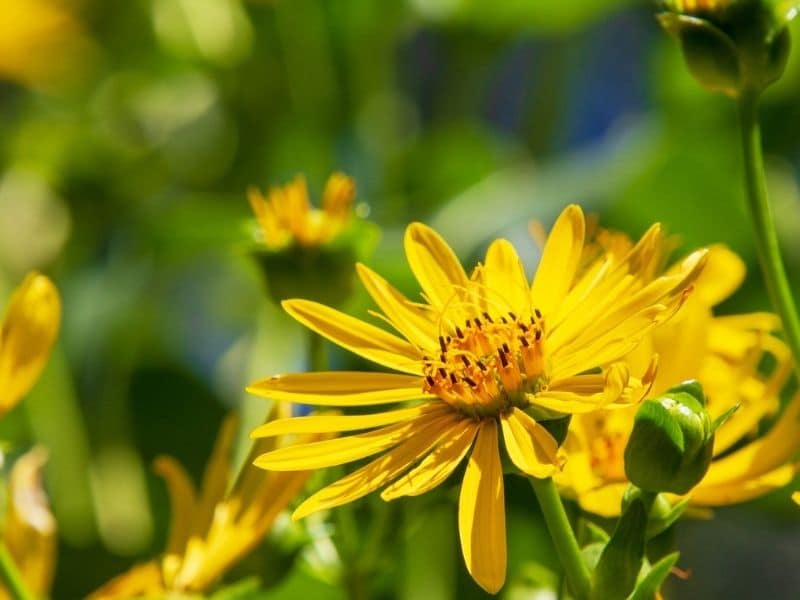
How to grow Aster flowers from seeds
- Aster seeds should be started off indoors during winter. Ideally, the trays would be placed next to the window or in a refrigerator. This way, the seeds will be stimulated and will come out of their winter dormancy.
- If the previous step is not done, then the germination rates will decrease significantly.
- The seeds should be sown in the soil, about one inch deep. Water them carefully.
- Once the aster plants begin to grow, and the dangers of frost have passed, transplant them outside.
- Leave 1 to 3 feet apart between an aster plant and the next as it tends to grow quickly and aggressively, but it depends on the variety of flowers you have.
- Adding mulch will alleviate the plant’s distress. It will also prevent weeds from appearing.
- Once it begins to grow and reach its level of maturity, you should stake it.
- Aster flowers will self-seed, yet, the new upcoming flowers will not have the same color as the original plant.
From cuttings
- The cuttings should be planted outdoors during spring.
- Depending on the plant’s size, you will need to make a hole in the soil. Water carefully after transplanting.
- Continue watering the soil, not the leaves. This way, you will encourage root growth. Leave 1 to 3 feet apart between asters. This flower tends to grow quickly and aggressively, but it depends on the variety of flowers you have.
- Adding mulch will alleviate the plant’s distress. It will also prevent weeds from appearing.
- Once it begins to grow and reach its level of maturity, you could stake it all together.
- Frost flowers will self-seed, yet, the new upcoming flowers will not have the same color as the original plant.
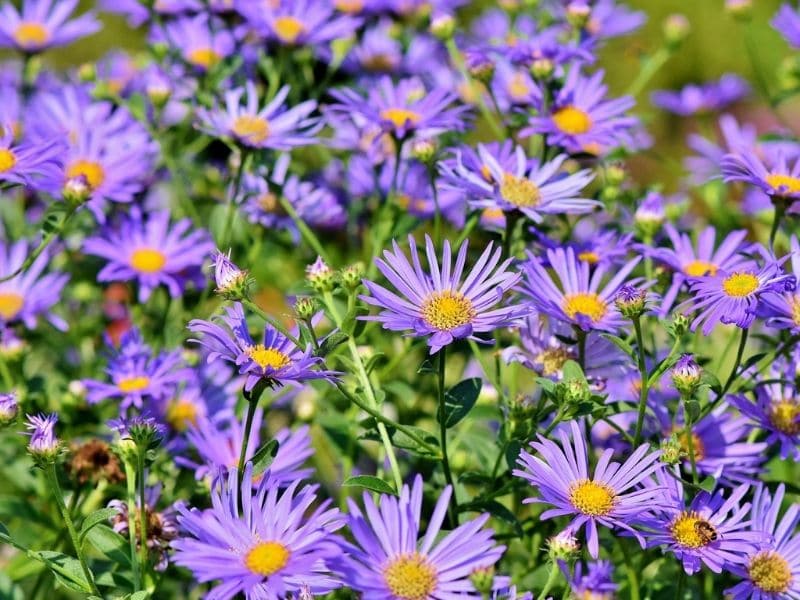
From purchased plants
Transplanting an already established aster plant is not tricky.
- Dig up a hole more extensive than the pot you purchased.
- Place the plant there and water it thoroughly.
- Add some mulch and compost to make sure the plant receives the required nutrients.
- Water the plant’s roots and the soil, not the leaves.
- Once it begins to grow and reach its level of maturity, you could stake it all together.
- Frost flowers will self-seed, yet, the new upcoming flowers will not have the same color as the original plant.
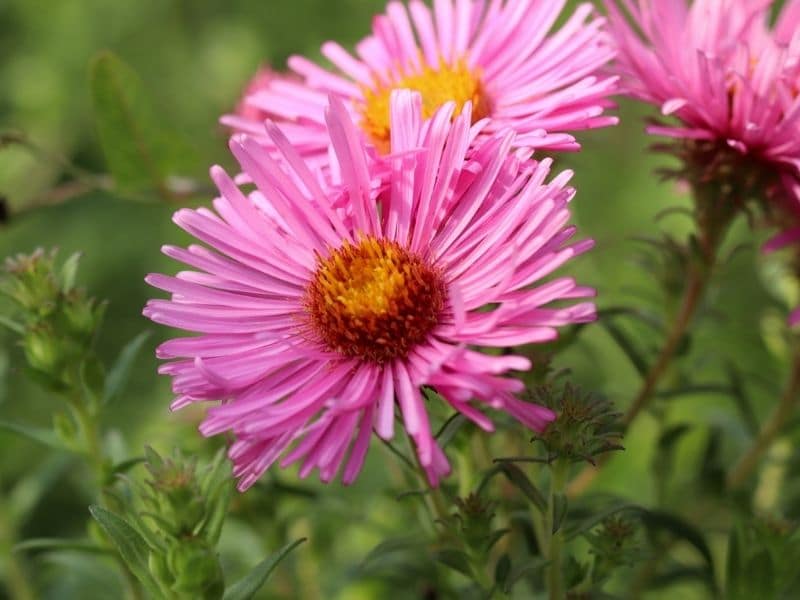
Aster Plant Types and Varieties
There are hundreds, if not thousands, of different aster plant varieties in the world. Here are some of them:
Novae-angliae Aster
Colloquially referred to as New England aster, Novae-angliae Aster is one of the most recognized frost flowers in the world. It will bloom throughout fall and sometimes during early winter.
These are some cultivars of this plant:
Barr’s Pink
As its name suggests, this plant has bright pink flowers that form a big cluster. Known as one of the tallest asters, growing up to 5 feet tall.
Purple Cloud
This species has showy purple blooms with yellow or white centers. T is an eye-catching flower, especially during late summer and early fall, when it begins to bloom. The purple cloud variety will grow 3 feet in height.
Rosa Sieger
This variety has pink petals that, at first look, seem very delicate. But, fear not, it is a vibrant and strong flower! It will grow around 4 feet in height and easily spread up about 2 feet in width.
September Ruby
One of the most striking Michaelmas daisies’ varieties has burgundy petals and a yellow or white center.
Novi-belgii Aster
This aster variety tends to produce smaller asters. These are some cultivars that derive from this plant:
Ada Ballard
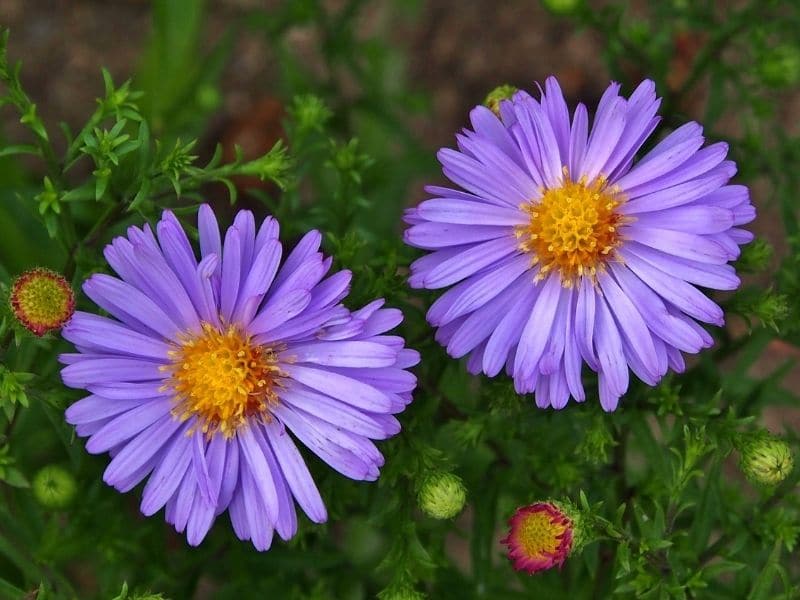
This type of plant has light purple or lavender-blueish petals. Even though the blooms are relatively big, and can grow 3 inches wide, and the plant’s overall length is only 3 feet in height.
Chatterbox New York
This variety has semi-double lilac blooms with a vibrant yellow center. This is a bushy perennial, and, unlike other asters, this plant is a dwarf variety, as it can only grow about 24 inches in height.
Royal Ruby
As its name suggests, this plant’s blooms are ruby, and sometimes it looks magenta. Unlike other frost flowers, the Royal Ruby is low-growing, albeit it doesn’t require much assistance after it has established itself.
Fellowship
This aster plant has double blooms, which are pale pink. Its center is yellow, although it turns green when it reaches full maturity.
Other Cultivars
Nanus
This aster flower is scientifically known as Aster sedifolius. It only blooms during the fall. It has long lilac blooms and bright yellow centers. Unlike other asters, the nanus variety is related to the genus Galatella. Lastly, it will only grow up to 2 feet high.
Snow Flurry
Scientifically known as Aster ericoides f. Prostratum. It has small white blooms with a pale-yellow center. It tends to take over other bushes while growing, and, in many areas, it’s considered a ground cover plant.
Sapphire
This plant is also referred to as Aster dumosus. It grows slowly and has bright purple petals with a yellow center.
White Monte Casino
This plant produces white flowers, which are divine and angelical. It is often used in bridal bouquets worldwide, as it represents love, peace, and unity.
Blue Tipped
What a unique flower this one is! It has white petals with a slight tone of blue at the tips. Additionally, it has a vibrant yellow center, which makes it truly special. Although, the center usually cannot be seen due to the petals’ density.
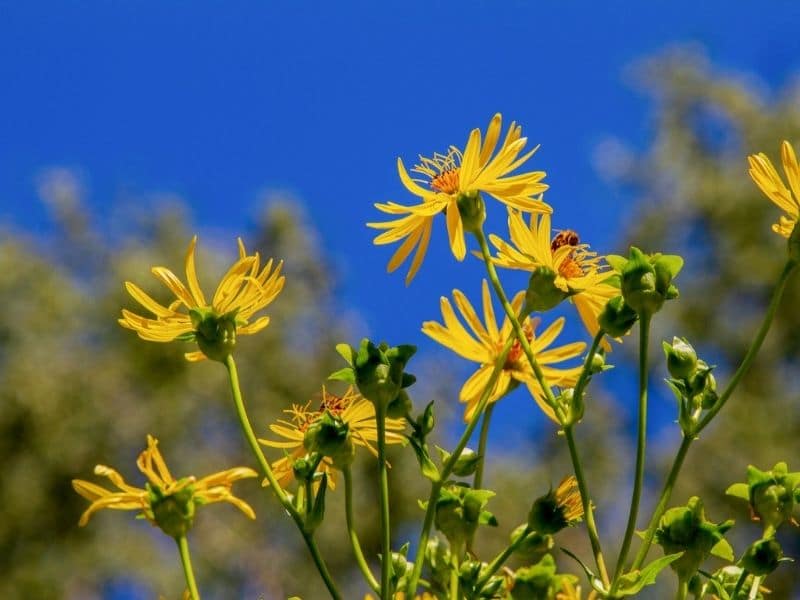
FAQ
Are Michaelmas daisies toxic?
No, aster flowers are not toxic. In fact, humans and pets alike could benefit from growing asters outdoors, as it has plenty of medicinal properties, which makes it a super special plant to have.
However, recent studies have shown that when growing asters outdoors, livestock should be kept far away, as there is a high level of toxicity of this plant when consumed by livestock (3).
What do asters flowers symbolize?
The aster flower is known for being elegant, romantic, and beautiful. It also makes people feel like they have more patience and faith. Lastly, this flower makes individuals believe that love will help everything and everyone.
What are the uses of aster flowers?
There is a wide range of options regarding how to use aster plants. All over the world, ancient and modern cultures alike have used the plants for numerous reasons. Here are just a few:
Medicinal Uses: Individuals have discovered that the aster plant positively affects respiratory health. Tinctures made from this particular flower could help those who have asthma, colds, or even chronic lung conditions.
The aster plant’s roots have also been used in Traditional Chinese medicine to relieve different pain types, especially headaches.
Dietary Uses: The leaves and blooms are edible! They are often eating in a salad or alongside meat or poultry. The rest of the plant could be used to make tea or tincture.
FAQs
How long do aster flowers last?
Aster flowers typically last for several weeks, with blooms appearing in late summer or fall and lasting until the first frost.
Are asters easy to grow?
Yes, Asters are generally considered easy to grow, thriving in a variety of soil types and tolerating different light conditions. They require regular watering and benefit from deadheading to prolong blooming.
Do asters need to be cut back?
Asters benefit from occasional pruning to maintain their shape and encourage bushier growth. Cut back asters by one-third to one-half in early summer to promote compactness and increase flowering.
Do asters continue to bloom?
Yes, with proper care and deadheading, asters can continue to bloom for several weeks, providing colorful flowers well into the fall season.
Can asters be grown in pots?
Yes, Asters can be grown in pots or containers, provided they have well-draining soil and receive sufficient sunlight. Ensure pots are large enough to accommodate root growth and water as needed to keep the soil evenly moist.
Can you take cuttings from asters?
Yes, you can take cuttings from asters to propagate new plants. Take stem cuttings in spring or early summer, dip the cut end in rooting hormone, and plant in moist potting mix. Keep the cuttings warm and humid until roots develop.
What do asters symbolize?
Asters symbolize various sentiments depending on culture and context, but they are commonly associated with love, patience, elegance, and daintiness. In some traditions, asters are also seen as symbols of protection and positive energy.
Conclusion
The aster plants are not only beautiful, but they also provide many beneficial aspects to those who cultivate them. For example, they are edible plants that have a great deal of medicinal value.
Additionally, the aster flower grows outdoors, it also makes any garden stand out by having vibrant and colorful blooms that can catch everyone’s attention! These popular flowers are definitely worth having and taking care of, especially when combined with other flowers, shrubs, or even trees!
Up Next: Aster Flower Meaning and Symbolism
References
Reference List:
- Vaezi J, Brouillet L. Phylogenetic relationships among diploid species of Symphyotrichum (Asteraceae: Astereae) based on two nuclear markers, ITS and GAPDH. Mol Phylogenet Evol. 2009 Jun;51(3):540-53. doi: 10.1016/j.ympev.2009.03.003. Epub 2009 Mar 14. PMID: 19289175.
- Mørk EK, Kristiansen K, Jørgensen HJL, Sundelin T. First Report of Golovinomyces cichoracearum as the Causal Agent of Powdery Mildew on Symphyotrichum novi-belgii (Synonym Aster novi-belgii) in Denmark. Plant Dis. 2011 Feb;95(2):228. doi: 10.1094/PDIS-10-10-0712. PMID: 30743433.
- Favorito JE, Grossl PR, Davis TZ, Eick MJ, Hankes N. Soil-plant-animal relationships and geochemistry of selenium in the Western Phosphate Resource Area (United States): A review. Chemosphere. 2021 Mar;266:128959. doi: 10.1016/j.chemosphere.2020.128959. Epub 2020 Nov 12. PMID: 33279237.
Close
*image by ekina1/depositphotos





